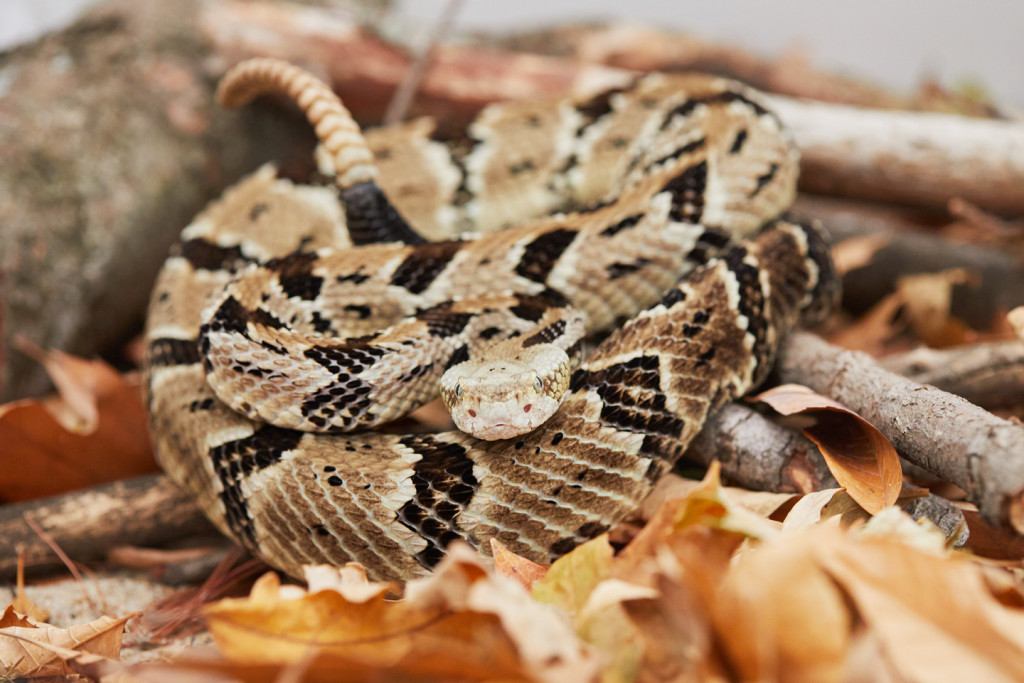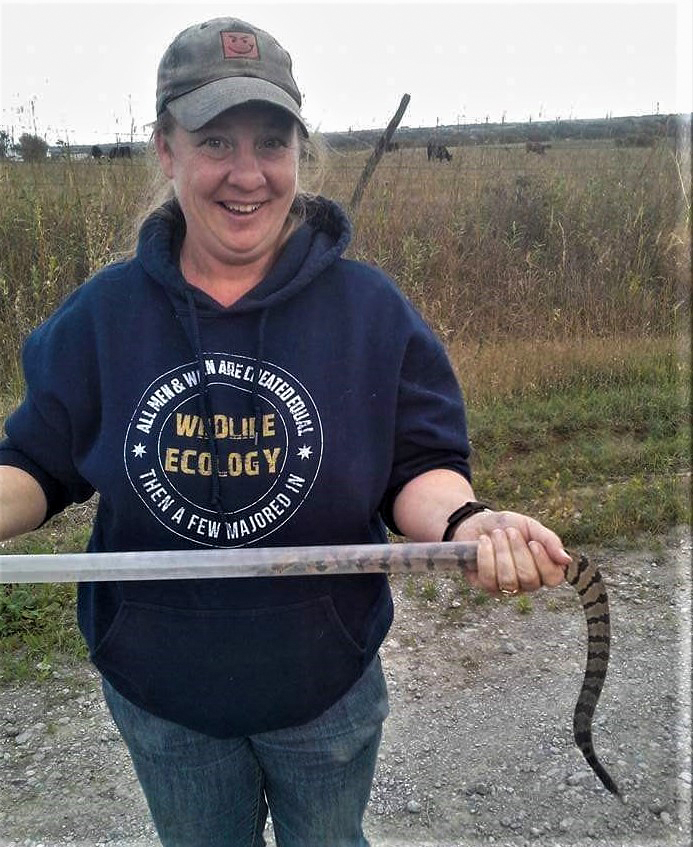
By Olivia DaRugna, Watchable Wildlife Biologist
Like Indian Jones, many people are terrified of snakes, but this fear is not much more than a defense mechanism. When you stop to think about snakes and their role in the ecosystem, these animals have evolved to possess unique traits that are actually quite ingenious.
For example, the serpents’ cryptic coloration keeps them well disguised, and with no legs and feet, snakes hardly make a sound as they slide along the ground. Snakes also have the ability to open their jaws extra wide and swallow prey whole, thanks to a specialized mechanism that works like a two-way hinge. Only when threatened do snakes hold an intimidating pose. Although these traits can make snakes appear frightening to humans, these characteristics are also what makes them exceptional predators in the ecosystem, helping to control those sometimes-pesky rodents.
Conservation
Nebraska has 30 different snakes, of which 16 are listed in the Nebraska Natural Legacy Project as at-risk of becoming threatened or endangered. The beautifully patterned timber rattlesnake (Crotalus horridus) is extremely rare in Nebraska. It is a Tier I Species of Greatest Conservation Need, listed as critically imperiled in the state. Since 2005, their population has been declining to less than 1,000 individuals. Threats to this species include habitat loss and fragmentation, road kills and malicious killings by humans. Recovery of declining populations is difficult because timber rattlesnakes are slow to mature and have low reproductive rates.

Beginning last summer, the Nebraska Game and Parks Commission partnered with the Nebraska Department of Transportation on a project to survey where timber rattlesnakes are located and to track their movements. Surveys by Game and Parks biologists will continue this year and will include tying on Global Positioning System tags to the snakes’ rattle. The GPS tags do not harm the snakes and are lightweight, weighing 5-7 grams — about as much as a sheet of printer paper. These tags will allow biologists to glean more detailed data on the snakes’ movements that will be used to inform conservation management of this species.
Much of the conservation efforts are in the southeastern corner of Nebraska where timber rattlesnakes inhabit deciduous woodlands with areas of rocky outcroppings. Like some other snakes, they may spend winters communally in hibernacula with other snakes, both venomous and nonvenomous, or they may hibernate alone. As the weather warms in spring, they make their way to their summer habitat in the woodlands where they are camouflaged among leaf debris.
Timber rattlesnakes are active both during the day and at night, using the pit organs between their nostrils and eyes to seek out prey that are warmer than their surroundings, like an infrared camera. This adaptation allows snakes to effectively hunt in the dark for their primary food source – small, nocturnal mammals like mice and shrews. Timbers use their hollow fangs to inject venom into prey to make them easier to swallow. Contrary to popular belief, the main purpose of venom is for eating and digesting. Producing venom takes energy, thus it is rarely used as defense. When a rattlesnake’s mouth is closed, the fangs fold to the roof of the mouth.
Like prairie chickens, timber rattlesnake males also have a courtship display to impress and compete for a female. The dance has several steps: the smooth slide next to the female, then rubbing his head and body on hers, and finally, he curls his tail underneath her tail. Pregnant females will give birth to live young. As the snakes grow, they shed their skin. Adults will shed one to two times per year, and each time they shed, a new segment is added to their rattle.
What to Do If You See a Timber Rattlesnake
If you see a rattlesnake, move away from it and leave it be. Most individuals are docile when encountered in the wild, often not moving from their coiled or basking position. However, if disturbed, timbers will send a warning sound by raising and vibrating their rattles. This is their way of communicating keep away from me, and humans should take this warning seriously. If they continue to feel threatened, they may strike. A bite from a timber rattlesnake is rare, but if it happens, you should immediately seek medical attention.
If you do spot a timber rattlesnake, please report your sighting of this or other at-risk snakes to the Natural Heritage Program. These reports contribute to our knowledge of species distributions. One of the biggest threats to the snakes are people that seek out to kill them. Because of this, it is important to keep the location of the snake to yourself and only share with biologists, like those under the Natural Heritage Program. If you see illegal harassment of any snake species, you can report it to the Wildlife Crimestoppers at Nebraska Game and Parks Commission.
The nonvenomous fox snake (Pantherophis ramspotti) is often confused with the timber rattlesnake. This species and other nonvenomous snakes do not have a rattle, but will sometimes imitate rattlesnake behavior by vibrating their tail against vegetation to mimic a rattling sound. Fox snakes also have a lighter-colored head compared to their body and have more rectangular blotches than the V-shape pattern found on timber rattlesnakes. To learn more about the snakes in Nebraska, click here.
If you would like to help support wildlife conservation efforts, please consider donating to the Nebraska Wildlife Conservation Fund.
